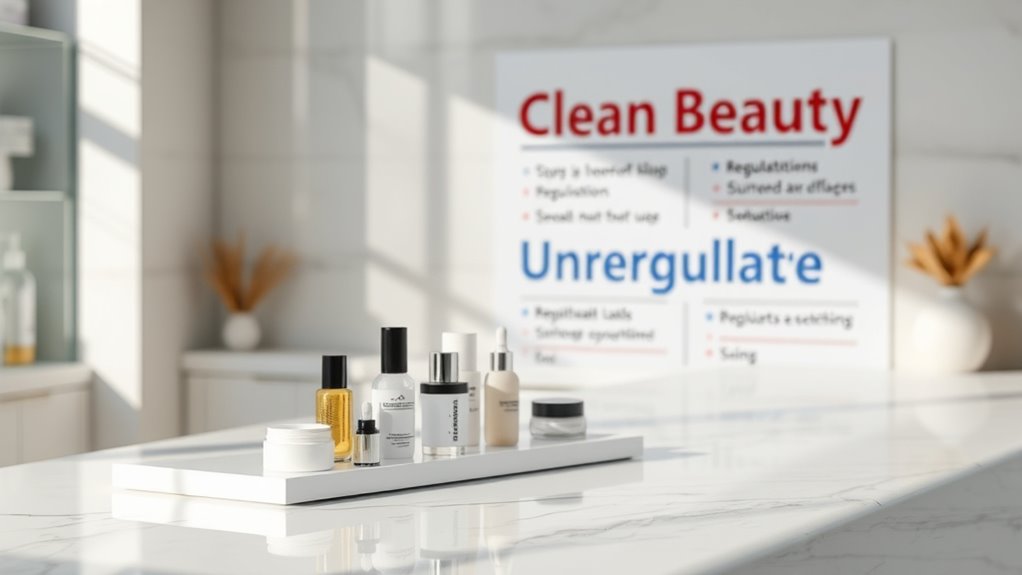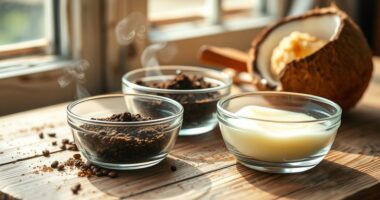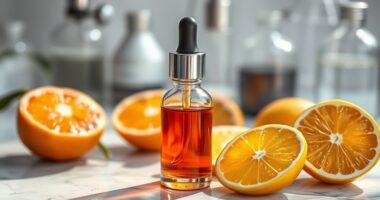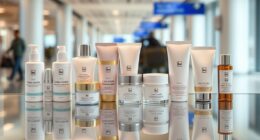“‘Clean’ beauty labels aren’t well regulated, so brands can use the term loosely without strict standards. There’s no formal definition or third-party certification, leaving you to trust vague claims or ingredient lists. While ingredient safety is overseen, the overall ‘clean’ label isn’t directly controlled by regulators like the FDA. To protect yourself, it’s helpful to know what’s behind these claims—continue to learn how to spot genuine transparency.”
Key Takeaways
- “Clean” beauty claims are largely unregulated, with no formal standards or third-party certification required.
- Regulatory agencies like the FDA do not specifically oversee “clean” labels, mainly focusing on ingredient listing and false advertising.
- Brands often use marketing tactics emphasizing natural ingredients, but natural doesn’t automatically mean safer or better.
- Consumers must independently research ingredients and verify claims, as many “free from” statements lack third-party validation.
- Awareness of regulatory gaps helps consumers better evaluate the safety, transparency, and authenticity of “clean” beauty products.
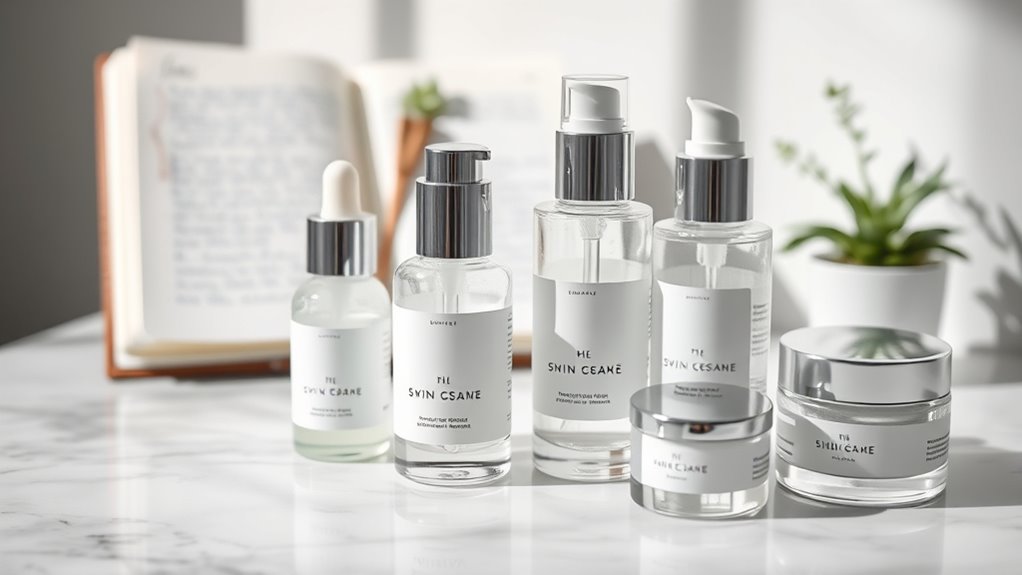
If you’ve ever looked at beauty product labels claiming to be “clean,” you might wonder what that really means. The truth is, “clean” isn’t a regulated term, so brands use it loosely to appeal to consumers seeking safer, more natural options. Many marketing strategies revolve around this label, with companies emphasizing natural ingredients to create an image of purity and health. But just because a product says it contains natural ingredients doesn’t automatically mean it’s free from harmful substances or better for your skin. The term “natural” itself isn’t strictly defined, so brands can include it as a marketing tool without adhering to specific standards. This leaves you to navigate a sea of claims that may be more about branding than actual safety or transparency.
The lack of regulation around “clean beauty” claims means companies have significant leeway in how they present their products. Some brands focus on natural ingredients, highlighting plant extracts and botanicals to market their products as gentle and safe. Others emphasize cruelty-free testing or eco-friendly packaging, aligning their brand with values that resonate with conscious consumers. These marketing strategies aim to create trust and differentiate their offerings in a crowded marketplace. However, the use of natural ingredients doesn’t automatically mean a product is better or completely safe. Natural substances can cause allergic reactions or interact negatively with your skin, just like synthetic ingredients. The problem is that without clear regulations, you’re left to decipher which claims are genuine and which are just clever marketing.
Regulators like the FDA in the United States don’t specifically oversee “clean beauty” labels, which means there’s no formal definition or certification for products claiming to be clean. Instead, oversight is often limited to ensuring that ingredients are properly listed and that false advertising doesn’t occur. This places the responsibility on consumers to do their own research and read labels carefully. Brands may also use vague terms like “free from” certain chemicals to appeal to safety concerns, but unless a product is explicitly certified by a reputable third-party organization, it can be difficult to verify those claims. Ultimately, understanding the marketing strategies behind “clean” labels helps you become a more informed shopper, enabling you to make choices based on ingredients and transparency rather than just marketing buzzwords. Additionally, being aware of regulatory gaps can help you better evaluate the safety and authenticity of these products.
Frequently Asked Questions
Can “Clean” Products Still Contain Harmful Ingredients?
Yes, “clean” products can still contain harmful ingredients because ingredient transparency isn’t always guaranteed. Brands may label products as “clean” without thoroughly ensuring ingredient safety, which means some harmful substances could slip through. It’s important for you to research ingredients and look for transparency from brands, so you can make informed decisions and avoid potential health risks, even in products marketed as “clean.”
How Can Consumers Verify “Clean” Claims Independently?
Think of verifying “clean” claims as steering through a maze. You can start by checking ingredient transparency—look for clear, detailed labels. Seek out brands that undergo third-party testing to guarantee their safety standards. Research third-party certifications and trusted sources. Don’t hesitate to contact brands directly with questions. These steps help you cut through the noise, giving you confidence in your product choices and guaranteeing you’re truly selecting clean beauty.
Are There International Standards for “Clean Beauty” Labeling?
You might wonder if there are international standards for “clean beauty” labeling. While some global standards promote transparency and safety, there’s no unified regulation across countries. This means label consistency varies, and brands may use different criteria worldwide. To guarantee you’re making informed choices, look for third-party certifications and research each label’s standards, as international consistency isn’t fully established yet.
Do Certifications Guarantee Product Safety Beyond Marketing Claims?
You can’t judge a book by its cover, so certifications don’t guarantee product safety. While they promote ingredient transparency, they have limitations and vary widely. Certifications can be helpful, but they don’t always guarantee safety beyond marketing claims. To truly protect yourself, scrutinize ingredients and research brands, as certifications alone don’t provide a full safety picture. Always stay informed and make choices based on thorough information.
What Legal Consequences Exist for False “Clean” Branding?
If you falsely advertise your products as “clean,” legal penalties could hit you hard, including fines or even lawsuits. Consumer protection laws aim to prevent deceptive marketing, so authorities can take action against misleading claims. You need to be honest and transparent to avoid these consequences, as misbranding not only damages your reputation but also results in costly legal penalties. Always prioritize truthful marketing to stay compliant and protect consumers.
Conclusion
As you navigate the world of clean beauty, remember that not everything labeled as “clean” is as transparent as it seems. While some regulations exist, they don’t cover every claim, so trusting your instincts and doing your own research is key. Ultimately, the real beauty lies in making choices that feel right for you, even if the labels aren’t always telling the whole story. Your well-being deserves more than just a pretty label.

